.jpg)
For many, the Superstition Mountains, located just east of Phoenix, Arizona, offer breathtaking views and rugged natural beauty. But for others, these mountains hold secrets, legends, and stories of hauntings that have lingered for generations. These ghostly tales are as much a part of the landscape as the towering cliffs and winding trails, weaving an intriguing tapestry of history, mystery, and superstition.
Just east of Phoenix, the Superstition Mountains rise from the desert floor like the backbone of some prehistoric beast. To most weekend hikers and tourists, they're simply a beautiful backdrop for Instagram photos. The mountains have earned their name a thousand times over.
For generations, people have ventured into these mountains, drawn by the promise of adventure, treasure, and a glimpse into the unknown. But beware, for the Superstition Mountains are said to be home to a multitude of ghostly apparitions, unexplained phenomena, and a dark history that will leave you shivering.
As you drive through the Arizona desert, the Superstition Mountains rise up like giants, their rugged peaks and twisted rock formations a testament to the unforgiving power of nature. The range stretches for over 30 miles, encompassing a vast and varied landscape that's as beautiful as it is treacherous. It's little wonder that this place has captivated the imagination of so many, from Native American tribes to modern-day treasure hunters.
The Origins of the Name: A Mountain Range Born from Fear and Respect
The story of these mountains begins long before modern settlers arrived. The Akimel O’odham people, also known as The Pima, believed the range was cursed—a land where misfortune struck without warning and bad omens loomed above the jagged cliffs. When settlers arrived in the late 1800s and heard these warnings, they adopted the name “Superstition Mountains,” a title that reflected both the fear and awe the peaks inspired.
The Spanish conquistadors added their own layer of mystery when they allegedly discovered gold in the 16th century. Rumors of hidden Jesuit treasure persist to this day, though no documented evidence exists. However, it's the Lost Dutchman's Gold Mine that really put the Superstition Mountains on the map of American folklore.
The Curse of the Apache
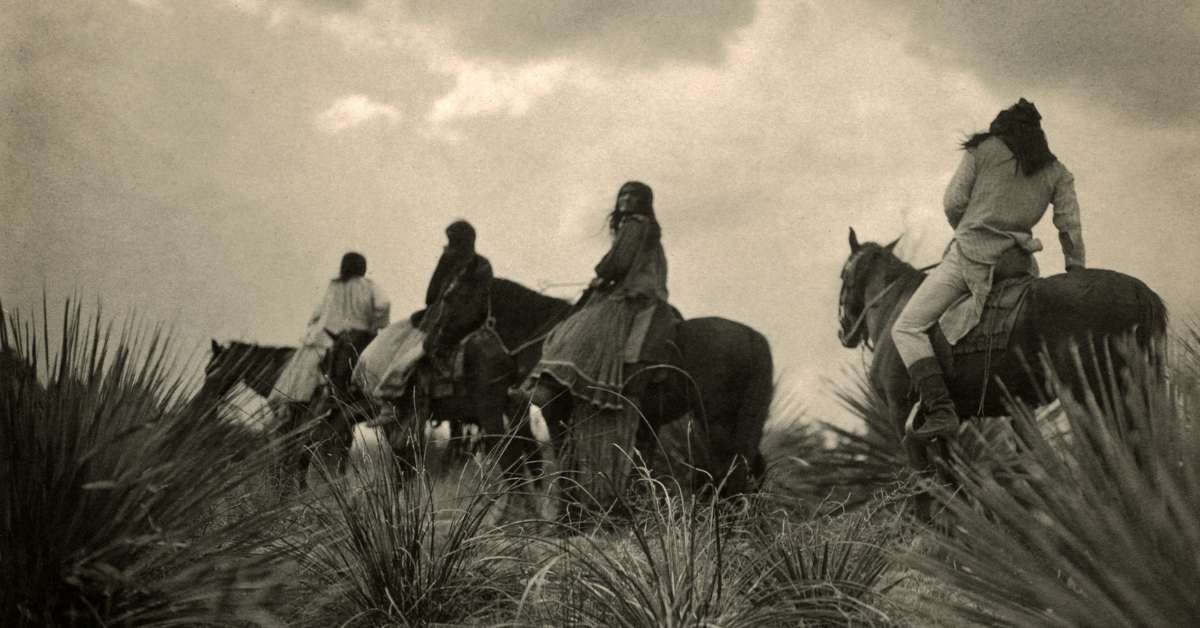
Before diving into the modern hauntings, we should acknowledge where it all began. The Indigenous Apache people considered these mountains sacred and forbidden territory long before European settlers arrived. They believed the entrance to the underworld existed somewhere within the range, guarded by the Thunder God who unleashed his wrath upon trespassers.
According to Apache lore, the mountains are protected by magical shape-shifters—beings able to transform into animals—sentinels who guard the earth and its secrets, helping those who honor the land but thwarting intruders. The area known as the "Apache Death Cave" is said to be the site where Apache warriors met a tragic end defending their homeland. Many believe their restless spirits still haunt the cave and nearby trails, warning visitors that the mountains are no place for the unwary.
"My grandfather would never look directly at the mountains during storms," says Maria Whitefeather. As a descendant of the Apache who once called this region home, her family stories stretch back generations. "He said the lightning was the Thunder God's eyes, searching for disrespectful visitors to punish. When asked if she believed these stories herself, Maria simply smiled and said, "I've hiked every trail in those mountains except during thunderstorms. Some traditions exist for a reason."
The Legend of the Lost Dutchman's Mine
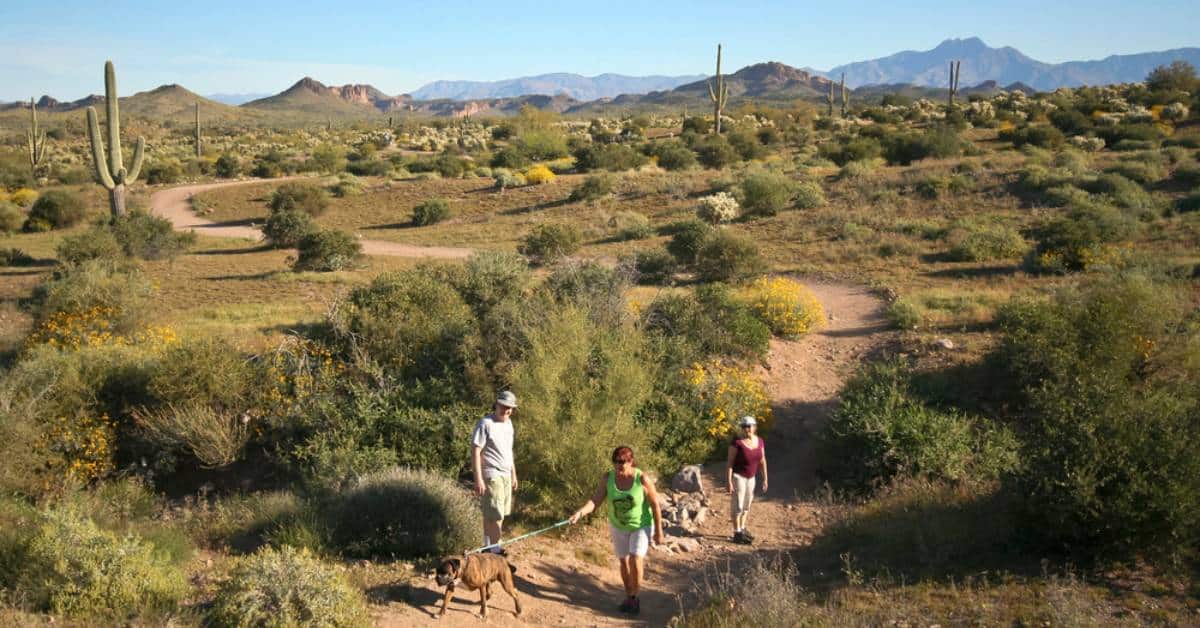
People hiking at the Lost Dutchman State Park
No discussion of the Superstition Mountains would be complete without remembering the legendary Lost Dutchman’s Gold Mine, and this is the first story I ever heard about these mountains. In the 1870s, a German immigrant named Jacob Waltz—mysteriously dubbed “the Dutchman” even though he was German, allegedly discovered a gold mine so rich its walls glittered with veins of pure gold. Yet Waltz guarded its location jealously until his death in 1891. He allegedly gave clues to its location, sparking more than a century of treasure hunting—and a trail of mysterious deaths.
But the Lost Dutchman’s mine isn’t just a story of fortune; it’s tangled in ghost lore. Legend says Waltz’s spirit roams the mountains, appearing as a ghostly figure who guides, or misguides, those desperate enough to seek the hidden cache. Hikers and prospectors tell of sudden cold breezes, flickering lights along empty trails, and strange sounds that vanish when investigated. Some swear they’ve seen ghostly miners dressed in dusty 1800s mining clothes, only to disappear when looked at directly.
Many treasure hunters have never returned, adding a chilling weight to the legend. Some believe the mountain’s curses or protective spirits prevent the mine’s discovery, a supernatural safeguard that turns greed into tragedy.
"There's definitely something protecting that gold," says Rick Martinez, who's spent thirty years searching for the mine. The walls in his home in Apache Junction are covered with maps marked with possible locations. "I've had three partners die over the years. Heart attacks, accidents, one simply disappeared. The mountains don't want us to find it."
While skeptics might attribute these deaths to the harsh desert conditions, the sheer number of fatalities associated with Dutchman hunters is difficult to dismiss. Since 1891, over 600 people have claimed to know the mine's location, and dozens have died while searching. Bodies discovered in the wilderness often show no clear cause of death. Others are never found at all.
There are newspaper clippings from 1934 about Adolph Ruth, an elderly treasure hunter who disappeared in the mountains. When his skull was found months later, it had what appeared to be bullet holes—though some reports claimed they were just fractures from a fall. In his recovered belongings was a note claiming he'd found the mine. The rest of his body wasn't discovered for another two weeks.
I thought this was the only story about the history of the Superstition Mountains, but I was wrong. Keep reading to learn about other spooky lore.
Tales of the Haunted Wilderness: Unseen Watchers, Ghosts, and Phantom Sounds
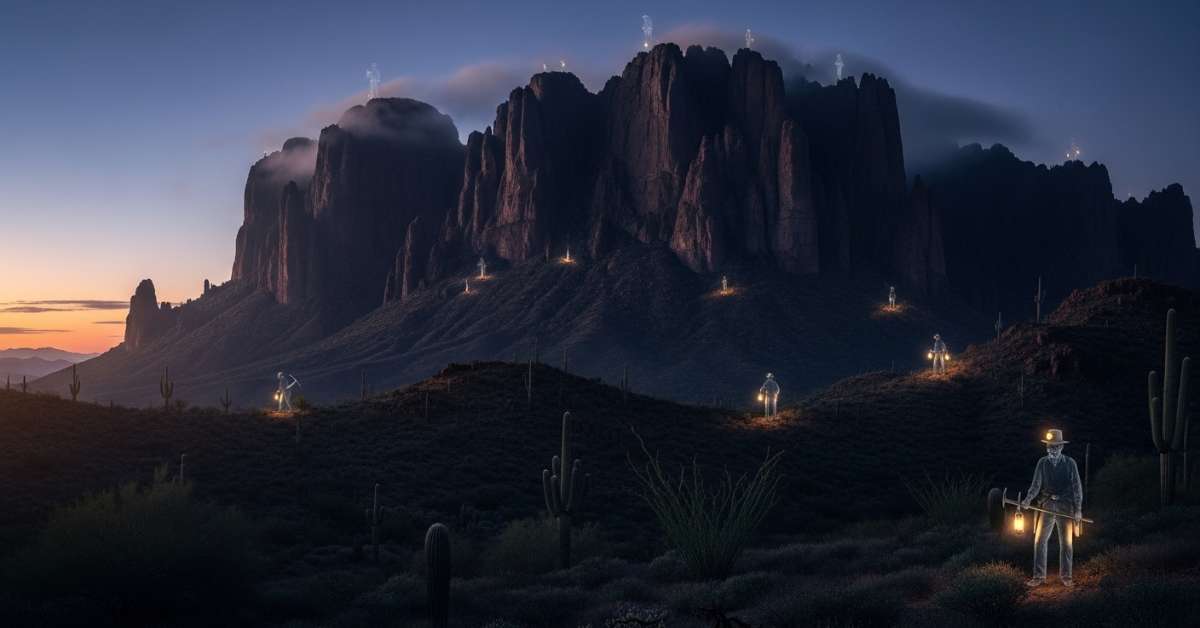
The Superstition Mountains aren’t just home to ghosts of miners; they are alive with strange phenomena reported by hikers and visitors. Across numerous accounts, people speak of hearing disembodied voices carried by the desert breeze, steps echoing on empty trails, and haunting Native American chants seeming to float through the canyons.
Many describe an unsettling feeling of being watched, even in broad daylight—an eerie sense that eyes follow their every move. Some claim to hear phantom gunshots and shouting in the dead of night, while others speak of mysterious flickering lights darting through the rugged terrain, impossible to explain by any natural or man-made source.
Ghostly apparitions are not uncommon in local tales. From shadowy figures trudging through the desert dusk to spectral miners eternally toiling away, these sightings have both enchanted and terrified those lucky—or unlucky—enough to witness them. Witnesses speak of a chilling, otherworldly presence, felt rather than seen, as if the very air grows dense with the weight of unfinished business.
Paranormal investigators armed with modern tools have ventured into the mountains hoping to capture evidence of these hauntings. EMF meters registering unexplained energy surges and night vision cameras capturing fleeting shadows contribute to the mountains’ mystery, though skeptics remain cautious. Still, the consistent stories from experienced hikers and locals alike ensure the Superstitions retain their eerie reputation.
Unfortunately, my husband and I are not hikers. I'd love to be able to hear something scary, but I'd be more afraid of rattlesnakes.
As the sun sets behind the mountains, locals say the real activity begins. Multiple hikers have reported seeing lights moving along the ridgelines—lights that follow no trail and appear in areas impossible to reach without climbing equipment.
"I thought they were other hikers at first," says Jennifer Williams, a Phoenix resident who frequently camps in the area. "But they moved too fast, covering distance that would take a normal person hours in just minutes. And they gave off this weird blue glow rather than the yellow of flashlights."
Some believe these are the ghosts of lost miners, eternally searching for the Dutchman's gold. Others claim they're the spirits of Indigenous people protecting sacred sites. But the most unsettling explanation comes from Dave Cooper, a retired park ranger.
"Those lights are what we called 'The Watchers,'" he told during an interview at his retirement home. His weathered hands trembled slightly as he spoke. "I've seen them up close once. It was my third year on the job, doing a night patrol after reports of illegal camping. What I saw wasn't a light—it was a figure, transparent but somehow still visible, dressed in old prospector's clothes. He was floating a few inches off the ground, and when he turned toward me, I saw nothing but darkness where his face should have been."
Cooper requested a transfer the next day and never worked night shifts in the mountains again.
Even more disturbing are the hikers who report encountering people dressed in clothing from different eras—Spanish conquistadors, 19th-century miners, or Indigenous people in traditional dress. These figures typically vanish when approached or walk behind rocks and disappear.
The Whispering Canyon
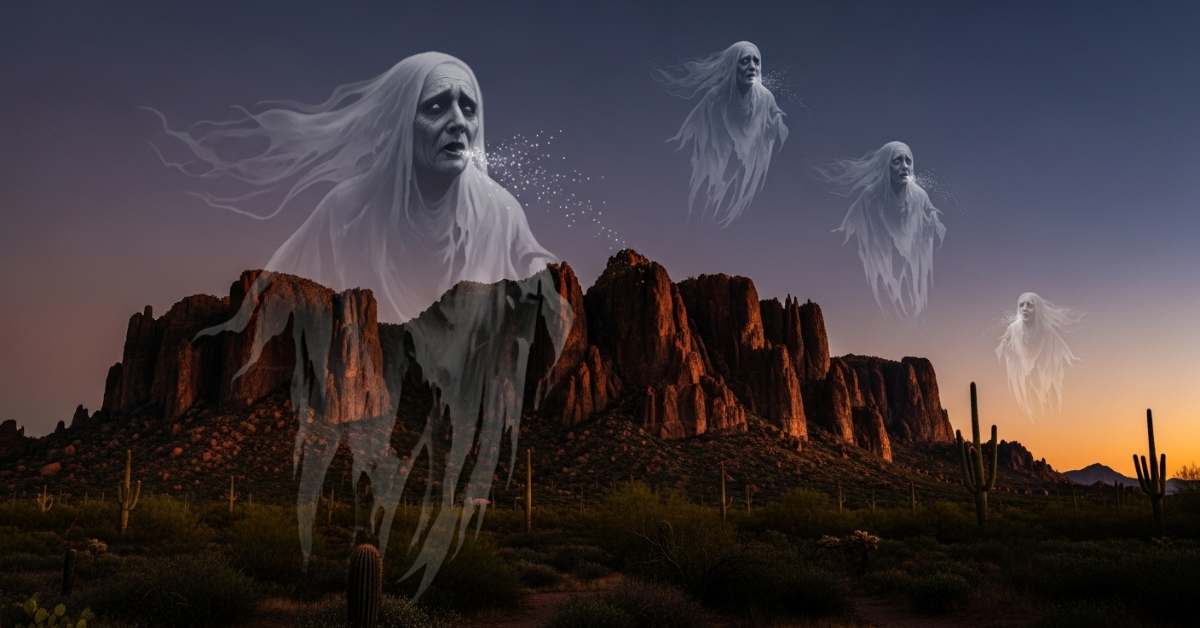
Perhaps the most consistent reports come from an area known as Whisper Canyon, a narrow passage between two cliff faces about four miles from the popular Peralta Trailhead. Even on completely still days with no wind, visitors report hearing voices—sometimes whispers, sometimes clear conversations in languages they don't understand.
Although you won’t find "Whisper Canyon" listed on maps or in official guides for the Superstition Mountains, the name evokes the region’s secretive character and dramatic atmosphere. The Superstitions are dotted with many secluded canyons—like West Boulder, East Boulder, and Needle Canyon—each with its own legends and rugged views. It’s common for the wind to swirl through these rocky corridors, creating soft sounds that seem to carry stories through the landscape. The area’s mystique and the sensation of quiet voices on the breeze have inspired explorers and adventurers for generations.
"It sounds like dozens of people talking at once, but the words are just beyond comprehension," explains Sandra Miller, a paranormal investigator who has recorded these phenomena. "We've captured EVPs [Electronic Voice Phenomena] here that our linguistic consultants can't identify as any known language, living or dead."
The Time Slip Phenomenon
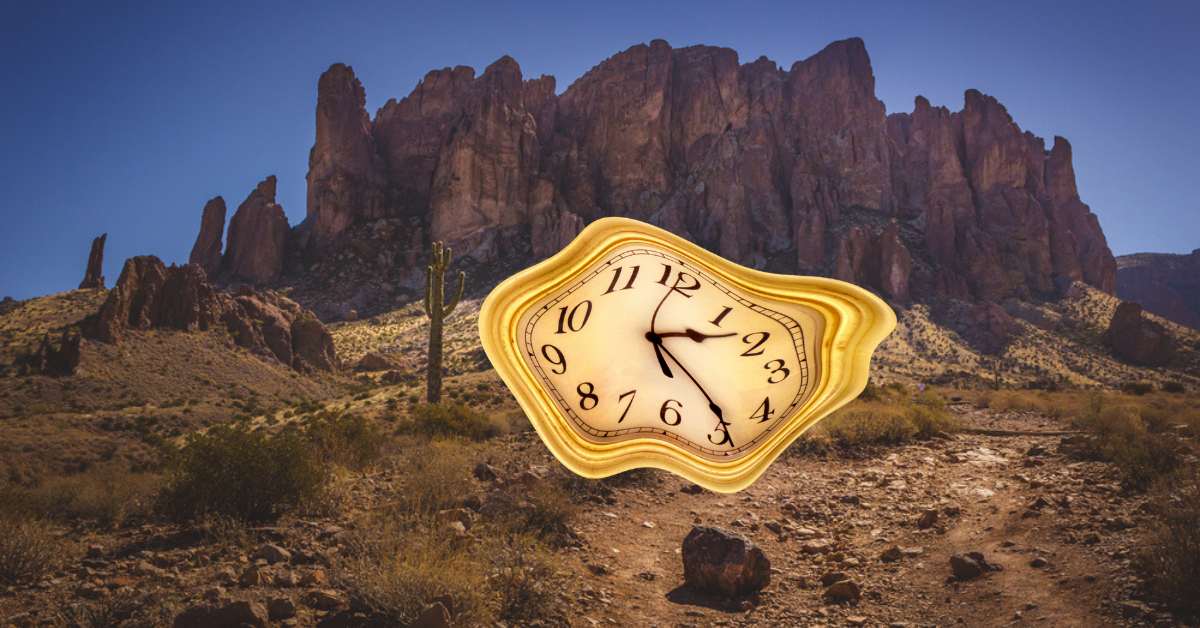
Perhaps the most perplexing reports are what paranormal researchers call "time slips." Multiple hikers have described experiencing temporal anomalies while in certain areas of the mountains, specifically in an area known locally as "The Vortex."
Mark Jefferson, a geology student at Arizona State University, described his experience to me with obvious reluctance. "I went in for a day hike on a Tuesday morning in June 2019. Everything was normal until I reached this small valley surrounded by rock formations. The air felt thick somehow. When I checked my watch, it had stopped, which was weird since I'd just replaced the battery."
Mark continued hiking but began feeling disoriented. When he finally made it back to the trailhead, his car was gone, and the parking lot looked different. "There was a ranger station that hadn't been there before. When I asked for help, they looked at me like I was crazy. Turns out it was Friday. Somehow, I'd lost three days, but in my mind, only about six hours had passed."
Medical professionals might attribute such experiences to dehydration or heat exhaustion, but Mark insists he was well-prepared with plenty of water and snacks, none of which were consumed during his "lost time."
Some locals tell tales of those who supposedly encountered mountain spirits or curses before disappearing, further deepening the mountains’ dark mystique. Bodies are occasionally found in remote areas, but many are never recovered, fueling speculation that the mountains harbor secrets beyond human understanding.
Modern Hauntings and Missing Persons

While historical mysteries add to the mountains' mystique, recent events suggest the supernatural activity continues unabated. Since 2000, at least seven hikers have vanished without explanation in areas that were subsequently searched extensively by rescue teams with dogs, helicopters, and thermal imaging.
In 2015, experienced hiker Matthew Johnson disappeared while on a well-marked trail on a clear day. Five days into the search, one of the rescue dogs began behaving erratically at a specific location, refusing to continue and whimpering uncontrollably. Nothing was found there, but three weeks later, Johnson's backpack appeared in that exact spot—a location that had been thoroughly searched multiple times.
Johnson himself was never found.
Similarly disturbing are the reports from the owners of homes built on the mountains' lower slopes. Lisa Carpenter, whose family built their dream home on the northwestern edge of the range in 2017, described a series of unexplainable events that eventually drove them to sell at a significant loss.
"It started with footsteps on the roof at night. We thought it was animals at first, but no animal moves that deliberately," she explained when I visited her new home in Scottsdale. "Then came the knocking—always three knocks on different doors or windows, always at 3:17 AM. We installed cameras, but they would mysteriously stop recording just before the knocking started."
The final straw came when their seven-year-old son began having conversations with someone he called "The Mountain Man" in his room at night. "He described him as an old man with a long white beard and dirty clothes with 'shiny rocks' in his pockets. We might have dismissed it as an imaginary friend, but when my son drew a picture of him, my husband recognized the face from old photographs of Jacob Waltz." I'd be selling that house after the footsteps on the roof!
UFO Sightings and Otherworldly Lights
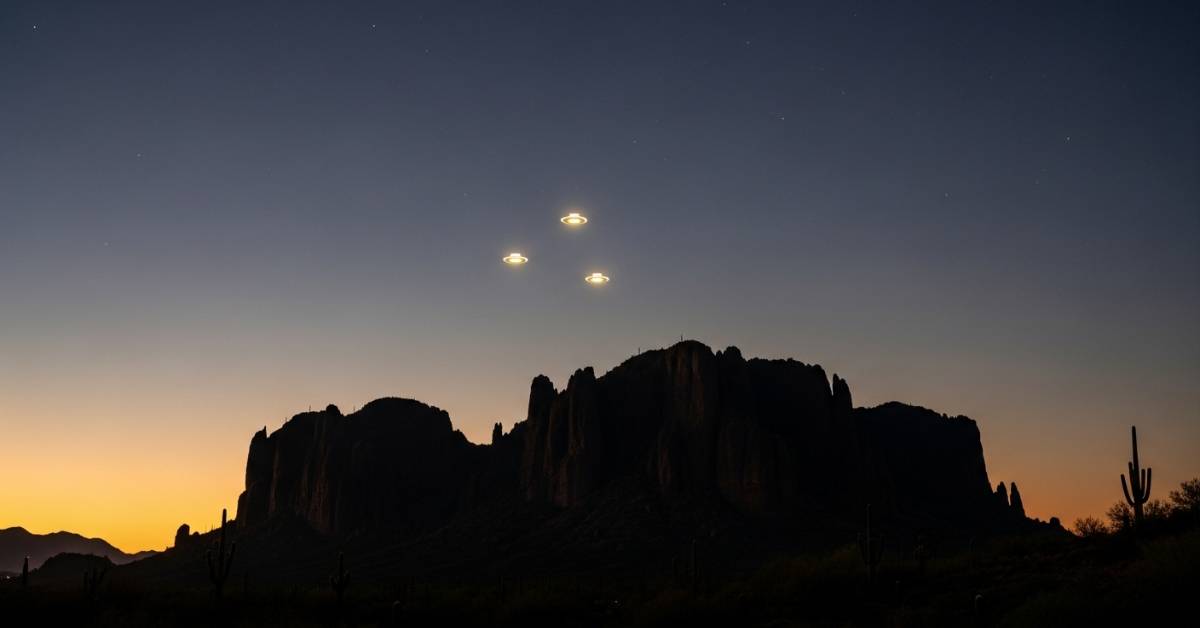
Adding an extra layer of strangeness to the Superstition Mountains are reports of unusual lights and unidentified flying objects. Arizona has long been a hotspot for UFO activity, and many believe the mountains act as a magnet for extraterrestrial phenomena.
The famous Phoenix Lights event of 1997, witnessed by thousands, included mysterious V-shaped formations that silently glided over the area. While not directly inside the mountains, such sightings contribute to the idea that this region is a crossroads for otherworldly experiences. Hikers have reported seeing glowing orbs darting behind the peaks or hovering above them, and the local lore often weaves these sightings into the haunted narrative. Whether these lights are military flares, natural phenomena, or something otherworldly, they only deepen the mystery surrounding these haunted peaks.
Fact: Dangerous Terrain
The legends about the Superstition Mountains aren’t limited to spirits. The dangerous environment itself has claimed many. Steep cliffs, sudden desert storms, and harsh wilderness conditions cause hikers and adventurers to lose their way or suffer serious accidents regularly. However, the more mysterious side is the number of people who have vanished without a trace, often during quests for gold or from exploration.
Scientific Explanations

Not everyone believes the Superstition Mountains are haunted. Geologists point out that the range contains large deposits of quartz, which some theorize can store and release energy in ways that might create electromagnetic anomalies affecting human perception.
Dr. Elaine Rodriguez, a geophysicist at ASU, offers another explanation. "The mountain's unique mineral composition, combined with dramatic temperature changes between day and night, creates conditions where rocks expand and contract rapidly. This can produce sounds similar to whispers or voices, a phenomenon called 'thermal acoustics.'"
Others suggest that the mountains' isolated location and unusual rock formations create rare acoustic effects, bouncing sounds from miles away to locations where they wouldn't normally be heard.
But these rational explanations feel insufficient when you're standing alone on a trail as the sun sets, listening to the sounds of footsteps approaching from behind only to turn and find nobody there.
Conclusion: Respect the Mystery
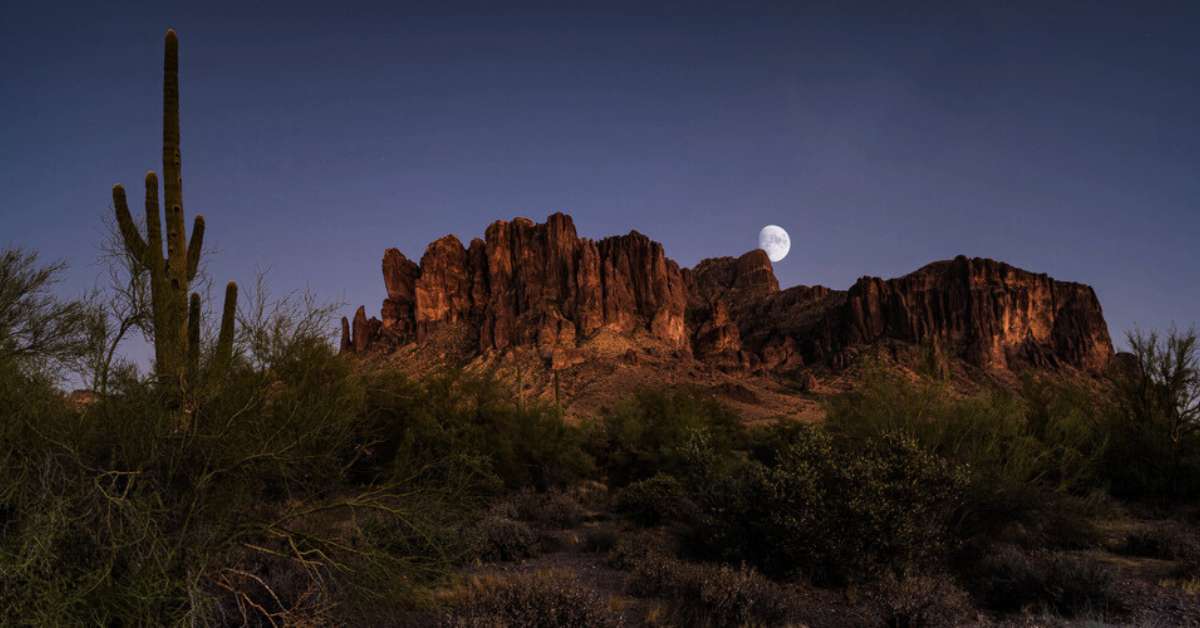
Do you believe in any of this? Whether you believe in ghosts or not, the Superstition Mountains demand respect. Their beauty is undeniable, but so is their danger - both physical and perhaps supernatural.
Park rangers and longtime residents offer the same advice: stay on marked trails, never hike alone, bring plenty of water, and most importantly, leave everything exactly as you found it. Don't take souvenirs, not even small rocks. The mountains remember, they say, and they hold grudges.
The Superstition Mountains represent something increasingly rare in our modern world—a place where ancient stories, historical tragedies, and contemporary experiences blend together into something that science can't fully explain. And sometimes, that mystery is more valuable than any gold the Dutchman might have found.
Posted by Judy Orr on
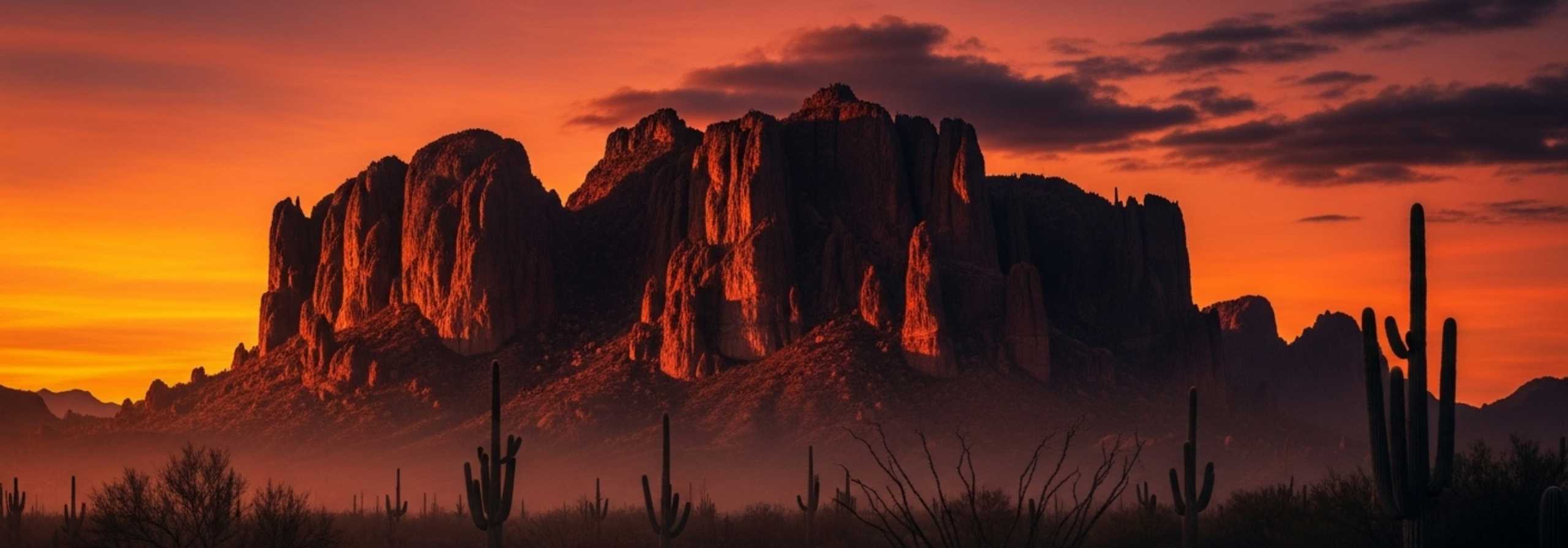
Leave A Comment